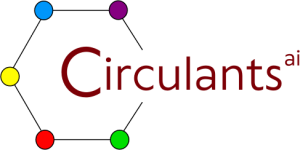The progress of technology in pharmaceutical research has allowed us to develop various methods (e.g. genomics, epigenetics, biochemistry, immunologically derived assays, etc.) and approaches to tackle specific questions, resulting in the creation of multiple independent data sources that are significantly correlated with each other. Correlation analysis has become a widely used statistical technique in bioinformatics to identify these correlations. It helps researchers identify relationships, patterns, and associations between different variables in large datasets of genes, proteins, and other biological molecules, and identify potential interactions that may be important for understanding various biological processes.
The field of bioinformatics is rapidly growing, and new correlation analysis methods and tools are constantly being developed to cope with the increasing volume and complexity of biological data. One of the major challenges faced by researchers during correlation analysis is the possibility of many data sets correlating in a similar fashion due to similar criteria, nature, or time of gathering, making it difficult to draw any meaningful conclusions. Therefore, researchers should use correlation analysis to make assumptions about relationships between variables more easily and chart a course for their future study and analysis, while keeping the potential for confounding factors or batch effects in mind.
Two commonly used correlation analysis methods are Pearson correlation analysis and Spearman correlation analysis, and correlation analysis is often used in combination with other statistical techniques, such as principal component analysis (PCA) and clustering analysis. Circulants offers Pearson correlation analysis between genomics and biochemical data to compare biomarker’s quantification across different datasets and has created infographics on Posit (earlier known as R-Studio), which could aid in the early observation of a molecule of interest in timely diagnosis or specific treatment of illnesses. The future prospects of correlation analysis in bioinformatics are vast, as it continues to evolve and expand with the increasing availability of large and complex biological datasets.
In conclusion, the use of correlation analysis in various molecular assays using bioinformatics is vital in identifying complex relationships between different biological variables, allowing researchers to develop more precise and effective treatments for a wide range of diseases. As the field of bioinformatics continues to grow and advance, we can expect to see significant progress in our understanding of biological systems through the application of correlation analysis.



